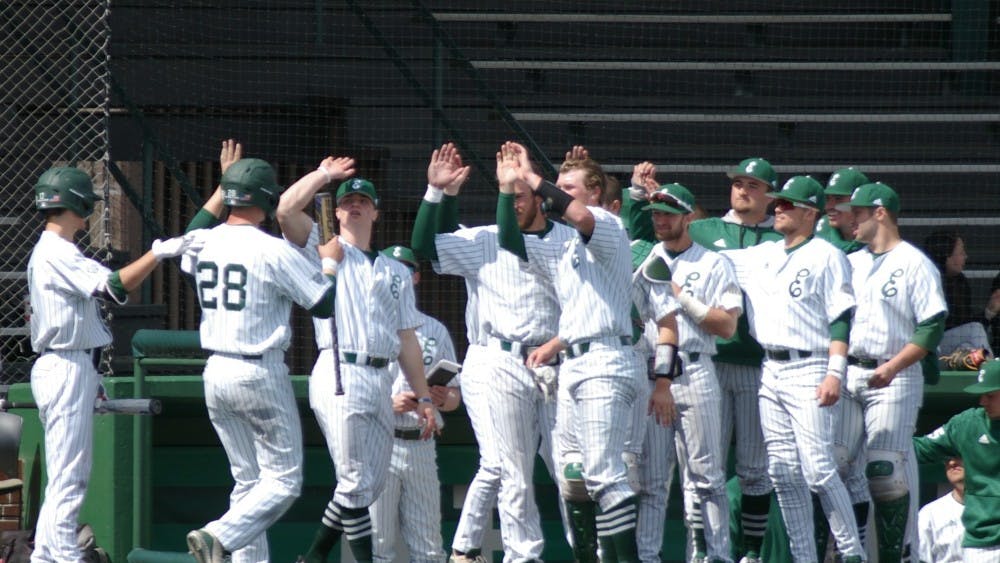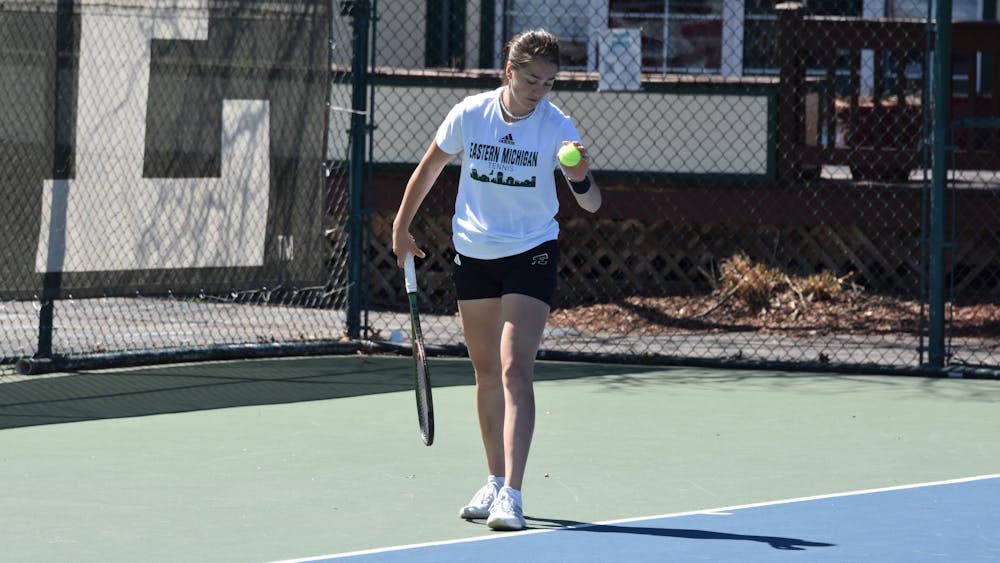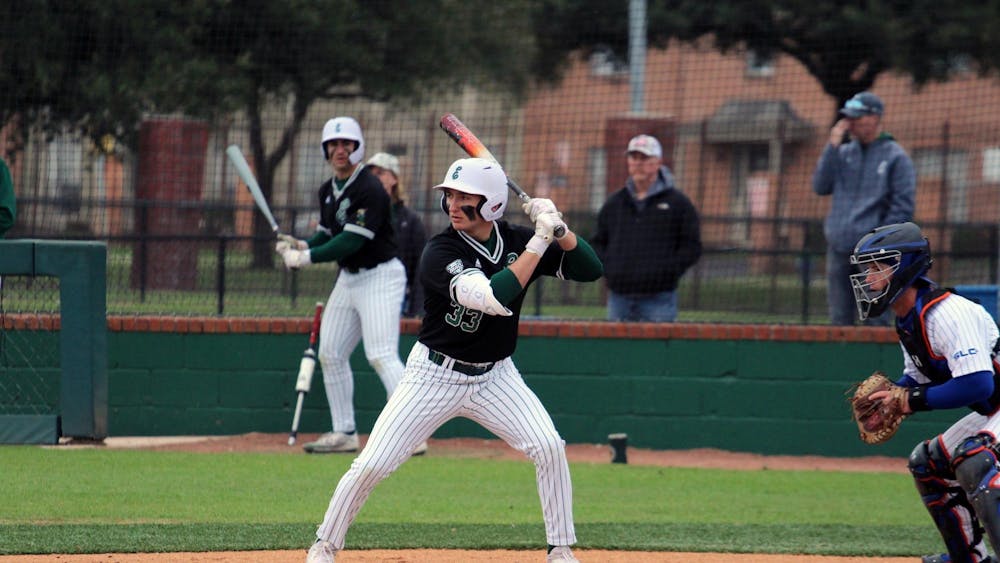In response to the multiple racist graffiti incidents on Eastern Michigan University's campus the EMU Faculty Senate hosted a day-long "Know Justice, Know Peace" teach-in on racism, diversity and inclusion on Monday, Nov. 14 in McKenny Hall.
More than 900 people participated in the teach-in, which featured a student panel and keynote speaker Victor Lewis, a nationally recognized social justice educator, trainer and activist.
Lewis presented “The Color of Fear,” a presentation that explored the causes and effects of racism, as well as strategies for overcoming racism and achieving social justice.
The teach-in also featured smaller break-out sessions on topics ranging from the causes of wealth disparity in the U.S., the dimensions of white supremacy, disability rights, the immigrant experience, structural violence and peace building, the Civil Rights movement and Black Lives Matter.
A #notmypresident rally followed at the end of the teach-in with a large crowd gathering to denounce the President-Elect Donald Trump.
Student panel discussion
One sentiment shared by students on an EMU panel during the teach-in was that more needs to be done to make black students feel welcome despite growing support from the EMU community since the first racial graffiti incident on Sept. 20.
The panel included EMU seniors Demajae Muray and Michael Wood, two of the four students currently facing disciplinary action because of their involvement in the overnight sit-in at the Student Center. Both seniors shared their perspectives on how the University has handled the seven acts of vandalism on campus.
Muray wanted to see more support from the community, noting the faculty teach-in as the first step in showing support. He also hoped that the University would handle the graffiti incidents better in the future.
Wood spoke after Muray and stated that the racist graffiti is targeting not only all the black people on campus, but every person of color in Ypsilanti and Ann Arbor.
"Students have told me that they've lost weight, that they can't sleep," Wood said. "I'm personally struggling with all of my classes and I know a lot of other students have as well. This has been a mental, physical and emotional toll on us."
Wood also read the points of the Black Student 10-point Plan from the Nov. 2015 Institutional Racism Forum and noted that the University failed to complete one demand from the plan.
"Our students feel very strongly that the University hasn't really created a curriculum that includes considerations of race, class and other forms of diversity," said Judy Kullberg, president of the Faculty Senate. "I think we need to have more conversations like this as well, where students are able to express their perceptions of what's the situation at the University."
Kullberg also said that faculty members need to listen to students express themselves during these conversations and figure out ways to make the University more inclusive.
Sam Jones-Darling, senator for EMU's Student Government and one of the panelists, criticized those in attendance who weren't aware of the most recent vandalism discovered on Sunday, Nov. 13.
"That doesn't speak well for you not knowing about it. That's not bad that you didn't know about it," Jones-Darling said, "but perhaps you need to put your ear to the floor; you need to know what's happening in your community. You need to know what's happening around, because as soon as you put your ear to floor you'll hear the cries that went unheard on Wednesday [Nov. 9]."
The freedom wall, located on the courtyard of the Pray-Harrold building, was vandalized with the messages "Trump 2016" and #MAGA (make America great again) written in red spray paint. The freedom wall was previously painted by students on campus with the message "united we stand, divided we fall," and referenced the Black Lives Matter movement.
"It is unacceptable that we have been continually attacked on this campus," Jones-Darling said. "There is a difference between hate speech and an act of vandalism."
Jones-Darling also criticized President-Elect Donald Trump and informed audience members of the #notmypresident rally that was scheduled to take place outside of McKenny Hall on Monday evening.
Panel discussion on disciplinary action
The student panel also held a discussion regarding the disciplinary action four EMU students are facing from the University due to their involvement in the overnight occupation of the Student Center on Tuesday, Nov. 1.
Faculty members met with Calvin Phillips, associate vice president of student affairs, on Nov. 18 to request that the University drop the disciplinary action against the students. The University has proposed sanctions against the students, who can either accept the sanctions as proposed or appeal to the Student Conduct Board. The four students have not went public with the proposed sanctions they may receive. Muray and Wood couldn't be reached for comment on what the proposed sanctions are.
During a Student Government meeting on Nov. 15 Tanasia Morton, student body president, said that the four students who received proposed sanctions have prior charges from violating the Student Code of Conduct in the past. Other students involved in the overnight sit-in who had no prior violations received a letter of warning from the administration.
In response to the racial graffiti incidents on campus students staged a peaceful sit-in protest in the Student Center between 10 p.m. on Tuesday, Nov. 1 and 6 a.m. on Wednesday, Nov. 2. The Student Center closes at 1 a.m. and while campus police didn't arrest those who stayed past 1 a.m., EMU officials representing the administration warned of disciplinary action.
Protesters in the Student Center were twice warned that occupying a closed building violated the EMU Student Code of Conduct. Half of the students chose to leave after the initial warning and many stayed outside of the Student Center to continue the protest.
"I do not agree with the president of the school saying they stand in solidarity with us, they agree with what we're doing and then going against those exact words," Muray said. "What I mean by this is them sending sanctions and violations and threatening students with expulsion for protesting."
Muray and Wood clarified that it wasn't the administration that threatened expulsion but rather Bob Heighes, EMU chief of police, as well as Phillips.
While a large number of students gathered in the Student Center EMU faculty and students questioned the University's decision to discipline the four students, who are perceived as leaders of the protests that have taken place on campus.
Both Muray and Wood believe that they were summoned to meet with EMU's Office of Student Conduct and Community Standards because they are perceived as leaders.
"The movement is bigger than me and Michael," Muray said. "If they are successful at getting us out of school, which I hope not, then the movement will still continue without us."
Kullberg stated that faculty members have reached out to EMU President James Smith and other administrators in recommending that any disciplinary action is dismissed. However, they have been informed through email that the Student Code of Conduct is to be enforced evenly and fairly.
EMU faculty also published an open letter to University administration and started a petition urging EMU to drop its cases against the protesters; the petition has received more than 2,000 signatures as of Nov. 18.
Following the Student Center sit-in Geoff Larcom, EMU executive director of media relations, said that EMU strongly supports the right of students to protest and that the University echoes their concerns over the racist vandalism.
"The distinguishing factor here is not that students protested, but that they chose to remain in the Student Center building long after its closure which is a violation of the Student Code of Conduct," Larcom said.
Disciplinary action ranges from a verbal warning to expulsion under the EMU Student Code of Conduct.
"I think it's crazy how they choose to spend all of their time, energy and resources and police work on everything that has been peaceful thus far," Muray said. "From protesters there's been no vandalism, no property damage; like it was stated earlier we're occupying our space that we pay tuition for. The fact that they want to possibly expel students from the University or even hit them with warnings is something that I can't fathom at this moment."
Despite students feeling that the University hasn't dealt with the vandalism appropriately, EMU has taken steps to improve safety on campus. The University increased the reward leading to the arrest of those responsible for the racist graffiti to $10,000. Though no arrests have been made particles and evidence have been collected from the graffiti sites and are being analyzed at a crime lab. The University has also performed the following actions in response to these graffiti incidents:
- Increased EMU police patrols near the student residence halls
- Increased contracted security presence near the student residence halls
- Hired 15 security guards to patrol the campus during the evening
- Participated in community forums to learn of concerns from the campus community
- Installed security cameras and lighting near the King Hall courtyard
- Took a survey of the exterior of every building on EMU's main campus
- Reviewed hundreds of hours of video footage
- Consideration of increased lighting and additional security cameras
There are currently 800 security cameras on campus and the University plans on providing funding for a total of 2,000 security cameras. EMU also created the President’s Commission of Diversity and Inclusion to address issues related to diversity and inclusion.
"Eastern Michigan University encourages our students to exercise the right to express their views on matters of public importance and matters that are important to them," Larcom said. "EMU has always and will continue to support the rights of our students to peacefully demonstrate on issues of importance to them."








